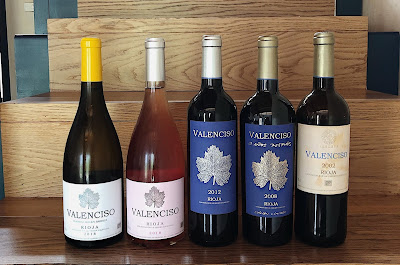This blog will include a contrarian view on the La La La wines, but first, I want to look at two more wines from the tasting.
The
2015 Côte-Rôtie Brune et Blonde includes 5% Viognier and includes the grapes from the two famous steep vineyards facing each other in the Northern Rhône, one with darker, iron infused soil, the other more sandy. The Viognier component makes this a lighter, more open wine, which can be drunk young. The Shiraz component, however, shows rich and silky blackberry and cassis, with ripe tannins (93 points).
The
2015 Côte-Rôtie Chateau d'Ampuis is a blend of seven vineyards. The wine is matured for 36 months in new oak. This is a serious wine, more red fruited than the 'Hospice', and very complex. The black raspberry fruit is very concentrated and ripe. Mocca and meaty flavours appear on the back palate, and the oak is noticeable. This can be a bit much for some, but it is a very well made wine (95 points).
To the La La Las, the pinnacle of Guigal winemaking, the Grange of France if you will.
La Mouline is always the more feminine wine of the three, and this is true for the 2015 La Mouline. The grapes come from 100 year old vines with very low yields. This Shiraz includes 10% Viognier, and the wine is matured for two years in new oak. There is no whole bunch included. This wine without doubt was the wine of the night. Fragrant, opulent, fresh, elegant, velvety, pure, silky, spicy; this comes to mind rather than any fruit descriptors. This full-bodied wine has incredible length and stays with you for some time (98 points).
The 2015 La Turque is quite a different proposition. This wine includes 7% Viognier and 20% whole bunches. This is an intense and brooding wine. Others have lauded this dense and powerful Shiraz, but for me, it lacks the layers of fruit and the differentiation one sees in the cooler vintages of this wine. The long finish compensates to a degree (95 points).
La Landonne is the counter piece to La Mouline, and this is largely because of the inclusion of 100% whole bunches and no Viognier included. The 2015 La Landonne is incredibly rich and concentrated, but the same comments I made for the La Turque apply here. The ripeness eliminates detail, and the mouthfeel is not as exciting as with La Mouline. Despite this, there is undoubtedly elegance in this wine, which is quite an achievement, and the finish is very long (95 points).









